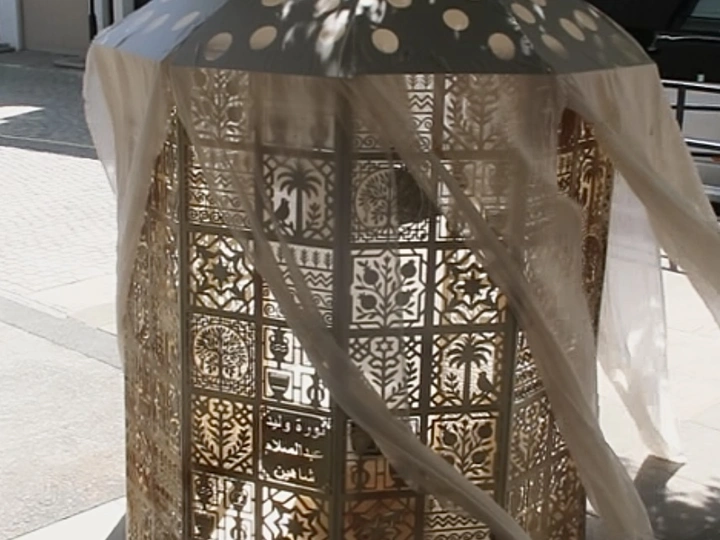EARTH REMEMBERS: MATERIAL CRAFT IN LIBERATED GAZA

I am Amina Seoudi, an Egyptian-Austrian spatial practitioner, designer, and researcher based in London. With a BA in Graphic Communication Design from Central Saint Martins and current postgraduate studies in City Design at the Royal College of Art, my work operates across the intersections of urbanism, identity, gender, and culture. I approach spatial practice through a multidisciplinary lens, using tools from graphic design, moving image, sound, creative strategy, and digital storytelling to question how space can reflect care, safety, and collective memory.
At the RCA, my current studio work is dedicated to studying Palestine as a site from which to rethink architectural education at large. The City Design studio adopts an interdisciplinary, justice-oriented approach, exploring the intersection of cultural heritage and urban struggle through case studies in Gaza and Jaffa. I challenge dominant preservation models by reframing heritage as a living, evolving form of resistance to colonial violence and displacement. Through speculative design, I envision urban spaces as agents of memory, sovereignty, and alternative futures for Palestine.
My research-led practice addresses global urban issues through situated, culturally embedded methods. Projects like Maybe We Are All the Same, a film that has been screened at several independent festivals, reimagines digital space as a tool for solidarity and discourse among Arab women navigating cultural taboos.
As a designer, I’ve worked across commercial and social sectors from visual storytelling to brand strategy, yet my focus remains rooted in spatial design as a critical tool for justice, visibility, and reimagining the built environment. I see spatial practice as a site of activism, pedagogy, and healing, one that is urgently needed in a world marked by inequality, erasure, and crisis.
This project responds to catastrophic destruction and deep psychological, cultural, and spatial wounds by proposing a material reconstruction framework over a ten year timeline centred on the archaeological Queen Helena tunnel, discovered in 1927 once connecting significant historic and civic sites. The tunnel is transformed into a 6.2 km healing space from Gaza City to the western shoreline. A book outlines each phase: excavation volumes, material reuse, and spatial sequences. The path follows Gaza’s natural topography: sandstone, clay, and soil respecting geological layers. Rather than treating it solely as a remnant, the tunnel is re-imagined as a site of cultural production and collective healing. Through phased interventions across three key sites, the proposal introduces spaces for re-purposing traditional Palestinian crafts. Chapter One features the Mashrabeya workshop at Palestine Square, where the second tunnel entrance reinterprets the traditional Islamic Mashrabeya using sand, clay, and rubble, materials rooted in daily life and healing rituals. Clay, rich in minerals, has long served in rituals of recovery. Even amid destruction, children mould clay into shapes, people rebuild with rubble, and farmers plant in bomb cratered soil, acts of quiet regeneration. Its lattice, engraved with martyrs’ names, lets light pass through absence, a poignant interplay of memory and renewal. The site echoes Palestine Square’s form but its atmosphere diverges. Chapter Two, the deepest path, becomes a monumental space and repository. Chapter Three transitions toward healing and reflection along the shoreline centred on the Qamariya workshop. Rooted in material literacy, earth is re-purposed. The Queen Helena tunnel becomes a space that breathes, shelters, remembers, and insists on the right to be human. Carved through struggle, these passages carry stories of smugglers, artisans, families, and labourers who transformed darkness into lifelines.